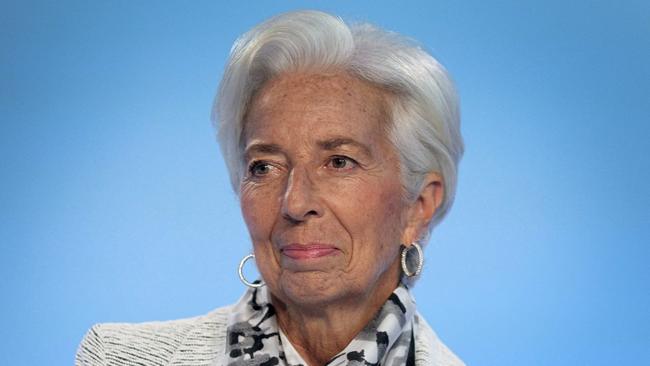RBA’s hint that rate rises may slow will relieve homebuyers but there’s always a downside
Time will tell whether the RBA has gone hard enough on rates but a slew of data due next week could test the market’s optimism about the central bank’s next move.
Hints that the Reserve Bank will slow the pace of interest rate hikes were good news for homeowners, share market investors and bondholders, at least for the short term.
They should also be bad news for the Aussie dollar, although the US dollar’s ascent has paused.
While the RBA, Bank of Canada and European Central Bank delivered outsized rate hikes – and the ECB and Federal Reserve talked up the need for aggressive rises – RBA governor Philip Lowe did not describe the latest hike as part of a normalisation of monetary conditions.
In his speech on Thursday, Lowe dialled up his inflation-fighting rhetoric. He said inflation was a “scourge” and it was important to avoid a wage-price spiral that would “end in higher interest rates and a sharper slowing in the economy”.

But the full effects of rapid rate rises were “still to be felt” and the “the case for a slower pace of increase in interest rates becomes stronger as the level of the cash rate rises”.
While the RBA is “committed” to returning inflation to its 2-3 per cent target “over time” it is “seeking to do this while keeping the economy on an even keel”.
Time will tell whether the RBA has gone far enough to convince businesses that it won’t underwrite demand in the economy to the extent that they can keep boosting wages and prices. The market’s optimism on that score could be tested as soon as next week.

NAB’s monthly business survey for August and Westpac’s consumer confidence index for September are due on Tuesday, and Australian labour force data for August is due Thursday.
If the business survey doesn’t show some weakening in confidence, conditions and the pace of expected wage rises in response to the 225 basis points of rate hikes delivered by the RBA since May, or consumer confidence rebounds, or the unemployment rate hits fresh record lows, the market will have to dial up its expectation of the size of an October rate rise to 50 basis points.

If the RBA does just 25bp in the face of that, then the market will need to look for a higher peak. In that regard, Lowe’s comment that “how high interest rates need to go and how quickly we get there will be guided by the incoming data and the evolving outlook for inflation and the labour market” highlights an important point on the outlook for monetary policy.
The official cash rate is now in the vicinity of what the RBA and most economists consider to be “neutral” – or increasing or decreasing economic growth.
But that doesn’t say anything about the “terminal” rate of cash needed to control inflation.
Westpac chief economist Bill Evans – who expects the cash rate to peak at 3.35 per cent in February – says a 4 per cent rate would be “very dangerous, due to the amount of leverage in the system”.

UBS chief economist George Tharenou says market pricing for the peak rate of cash would “likely crash the housing market and lead to a recession” – albeit the market-implied peak of cash shifted down to 3.62 per cent from 3.89 per cent this week.
Commonwealth Bank’s head of Australian economics, Gareth Aird, says the RBA’s estimate that the neutral cash rate is around 2.5 per cent is actually about 100bp too high and policy is “already in the contractionary zone”.
This is an extraordinary period for inflation globally, and policy may need to be contractionary for some time in order to get inflation under control.

Australia doesn’t have Europe’s energy crisis or the rapid increase in wages evident in the US, but the economic cycle probably lags the US by six months due to the slower reopening here.
It’s also worth considering the impact on economic growth and inflation of the profits being generated in the oil and gas sector by the high prices stemming from the European energy crisis. Iron ore prices have retreated a lot but are still generating large profits.
The Australian dollar found support as the US dollar slipped at the end of the week. But earlier in the week, it went close to breaking its July low at US66.82c.
But if the Aussie dollar does fall because of narrowing interest rate differentials, it will push up the price of imported goods, causing “imported inflation”.
In that way, efforts to clamp down on inflation overseas may spill over to Australia.








To join the conversation, please log in. Don't have an account? Register
Join the conversation, you are commenting as Logout